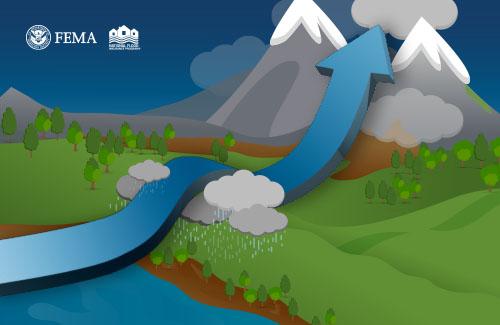Insurance agents are diligent. You show up when people find themselves in dangerous or frustrating situations, and you persevere as you work to help people overcome difficulties. People look to you when the going gets tough, because you have the tools and resources needed to resolve even the trickiest of situations. To assist you in doing what you do best, we're answering some commonly asked questions, so you don't have to. Today's question being, “What are atmospheric rivers?”
Here's everything you need to know.
What are atmospheric rivers?
- Atmospheric rivers are bands of warm, moist tropical air that move across the sky much like a river. These storms can erupt either as rain or snow and have been known to provide up to half the annual precipitation in Western states. While they can bring much-needed water, because of the amount of precipitation they may unexpectedly drop, they're also able to cause flash flooding.
Why are atmospheric rivers dangerous?
- Across America's West, atmospheric rivers cause roughly $1 billion of flood damage annually, and are in fact the cause of much of the flooding in that region. Western states can have a higher risk for a multitude of reasons, such as recent wildfires priming the soil for flood conditions. Dry soil and burned areas recently impacted by wildfires aren't able to absorb water quickly, so having a river of water pour down can lead to dangerous conditions for people and property across the region.
- This is especially so in areas like the American Southwest, where there have been drought-like conditions for the past two decades. People there might not think they have a risk of flooding. But soil is like a sponge — it absorbs best when it's already damp. Dry soil might lead to a major flood springing up seemingly out of nowhere for your clients.
When is the risk of atmospheric rivers the highest?
- Generally, these storms are the most common between the fall and the spring. That makes the summer a smart time to remind your clients of their flood risk, to ensure they're prepared before their risk starts rising.
Hopefully, this helps you in answering some of your clients' questions about flooding and their flood risk. When you market and sell an NFIP flood insurance policy, you're not only protecting your clients against flooding, but you're also gaining access to a toolbelt of resources to use in your daily life.

